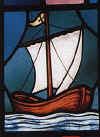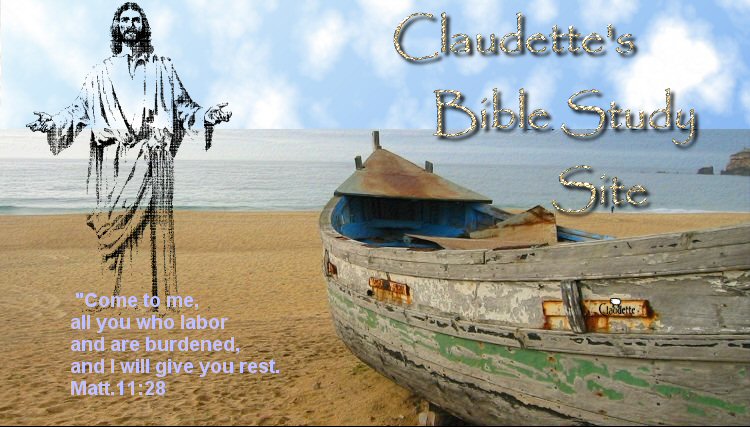The Gospel of Luke
St. Thomas of Canterbury Catholic Church


The Gospel of St. Luke - Introduction
The Uniqueness of Luke
Of the four Gospels, Luke’s is the longest. It includes material not found elsewhere—for example, Jesus’ childhood, his parables in chapters 10-19, his one-year ministry through Samaria and Perea during his final journey to Jerusalem. It includes unique characters—for instance, Zechariah and Elizabeth, Simeon and Anna, Simon the Pharisee and the prostitute, the Emmaus disciples (note the coupling), Zacchaeus.
Of the four Gospel writers, Luke was the only Gentile. As an initial outsider to God’s chosen community, he was intrigued with Jesus’ compassionate attention to foreigners (Syrians, Romans, Greeks, Africans) and social outcasts (tax collectors, lepers, prostitutes, beggars).
No other biblical author includes as many women—or as sympathetically as Luke does. No other writer talks about children and describes family life as he does. This is delightfully surprising for one who was apparently a bachelor.
Luke made a rich contribution to apostolic history, the period when the Gospel was established in the Roman Empire. As a cosmopolitan traveler, he was admirably suited to become a coworker and "beloved doctor" of Paul, the apostle to the Gentiles. Acts and Paul’s letters hint that this companionship had a tempering effect on the fiery apostle who became Christianity’s fore most church planter, theologian and statesman.
The Writing of Luke
Luke’s Gospel is accurate and well organized. Its formal introduction reflects the writer’s Greek literary background (1:1-4). Here he claims to follow the principles for writing dependable history: (1) acquaintance with similar ac counts, (2) interviews with primary sources—eyewitnesses and leading personages, (3) investigation of reported events, (4) orderliness in arranging materials, and (5) a stated aim.
Most scholars think that Luke (like Matthew) probably used Mark’s older Gospel as the structural basis of his Gospel. When, however, he does use Mark’s stories, he often touches them lightly with an extra personal detail. For example, compare the openings of the Jairus story in Mark 5:21-23 and Luke 8:40-42.
Luke addresses his Gospel (and Acts) to Theophilus. We know nothing else about this man. His name, "lover of God," was an aristocratic Roman one, and not uncommon among government officials. He could have been an actual person or a literary representative of this upper class of Gentile readers. According to Luke 1:4, he was either a seeker or a new Christian in need of historical substantiation of the good news.
Characteristics of Luke
Luke writes history like an artist. He employs prose and poetry, dialog and description. In his choice of events and people he uses rhythm of emphasis, comparisons and contrasts. He uses this last teaching technique especially well with broad subjects—for example, Jesus’ compassion for outcasts and his condemnation of the Pharisees, and Jesus’ teachings on freedom of life with God and the cost of discipleship.
In transitions Luke is especially artistic. Note how the change of persons and locations in chapter 1 is smoothened by moving from one pregnancy to another. Likewise, his summaries of events also serve as links to the next train of events (for example, 2:39-40 or 5:15-16).
His book overflows with worship, prayer and praise, hope and joy. It begins with Old Testament believers in the temple, worshiping in messianic hope.
It ends with New Testament believers also in the temple, rejoicing in resurrection hope. In between we see Jesus interacting personally with the widest range of human beings found in any book of the Bible (or any book in the world)—the old and the young, the very poor and the very rich, Jews and foreigners, national/international leaders and the rejects of society, the highly articulate and the non-articulate.
Watch for bits of humor (for example, in Jesus’ parables and in the Zacchaeus story), the role of the Holy Spirit, medical terms, Jesus’ habits of prayer, and the "divine necessity" Jesus felt (2:49; 4:43; 13:16, 33; 17:25; 24:26).
Luke’s portrait of Jesus is strong, warm, compassionate and cosmopolitan—like the writer himself.
These studies are divided into two parts. The first part is how Jesus progressively revealed his full identity (1-9:50). The second is how he prepared his disciples to carry on his divine mission to the rest of the world (9:51-SetBibleContext:Luke 24}24:53).
My prayer for you as you study comes from Paul the apostle, Luke’s friend:
May the God of hope fill you with all joy and peace as you trust in him, so that you may overflow with hope by the power of the Holy Spirit. (Rom 15:13)